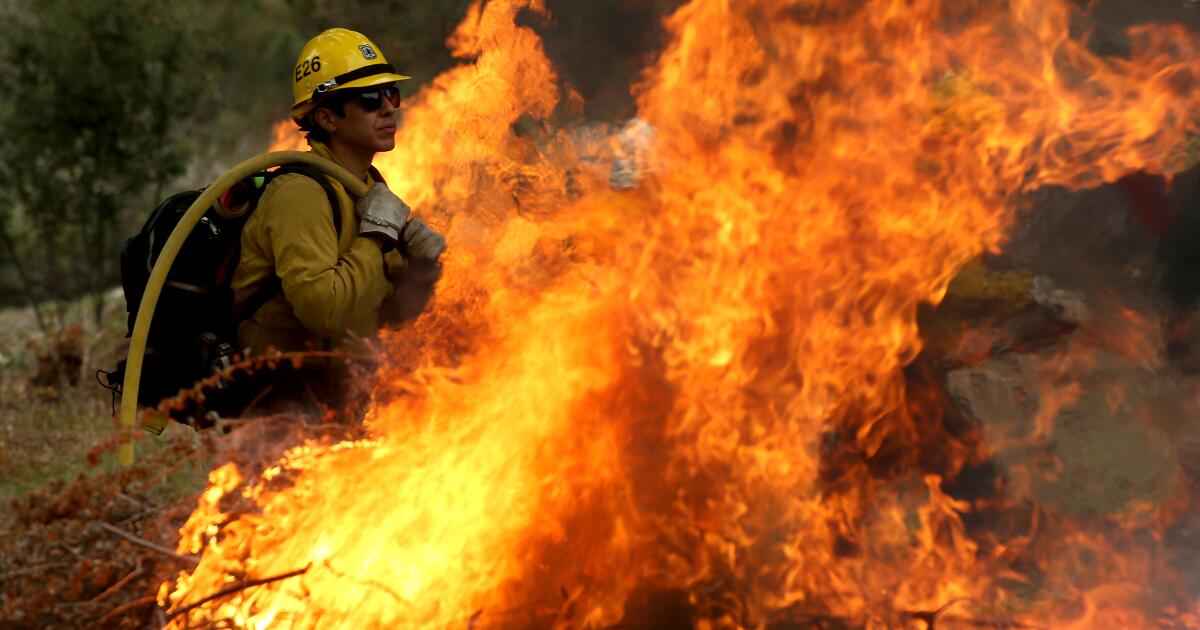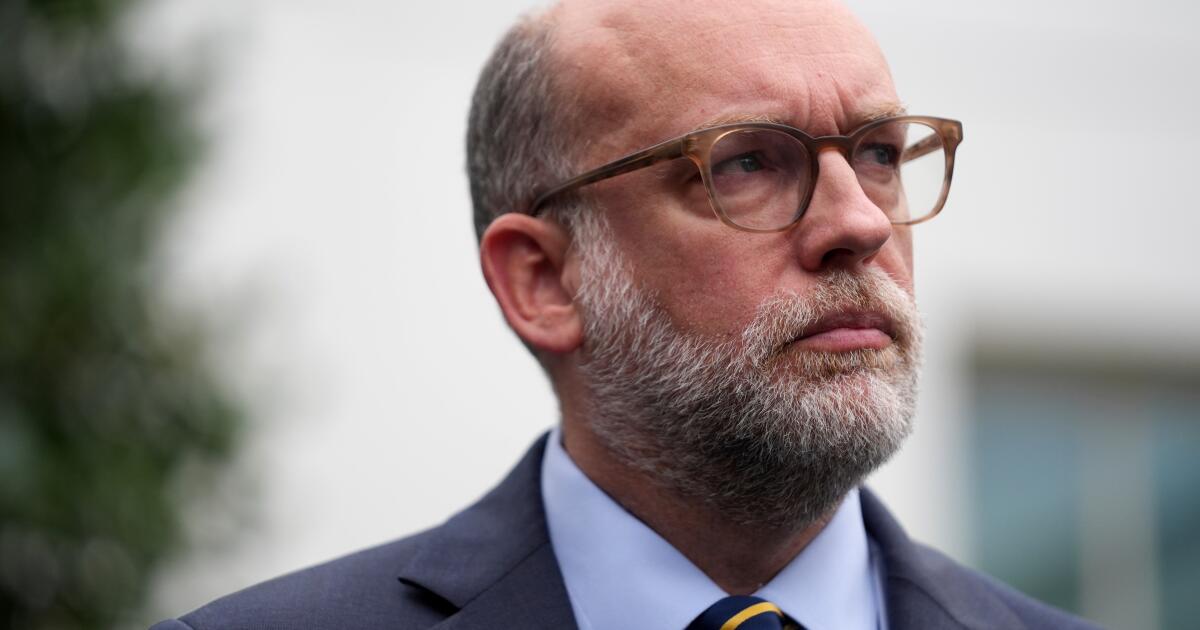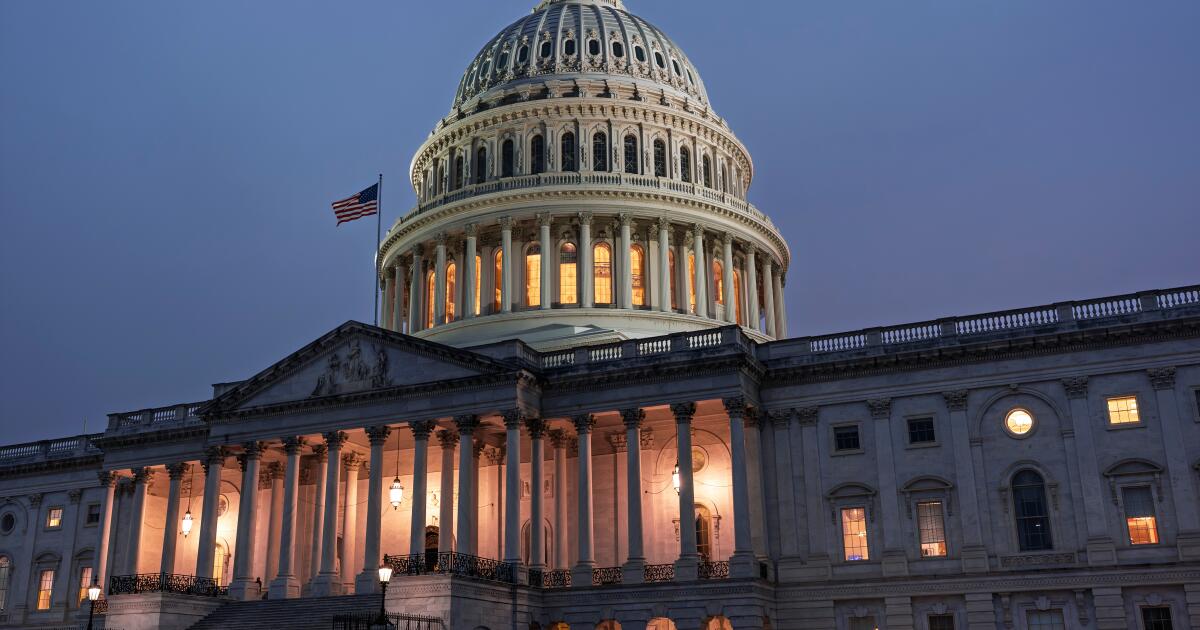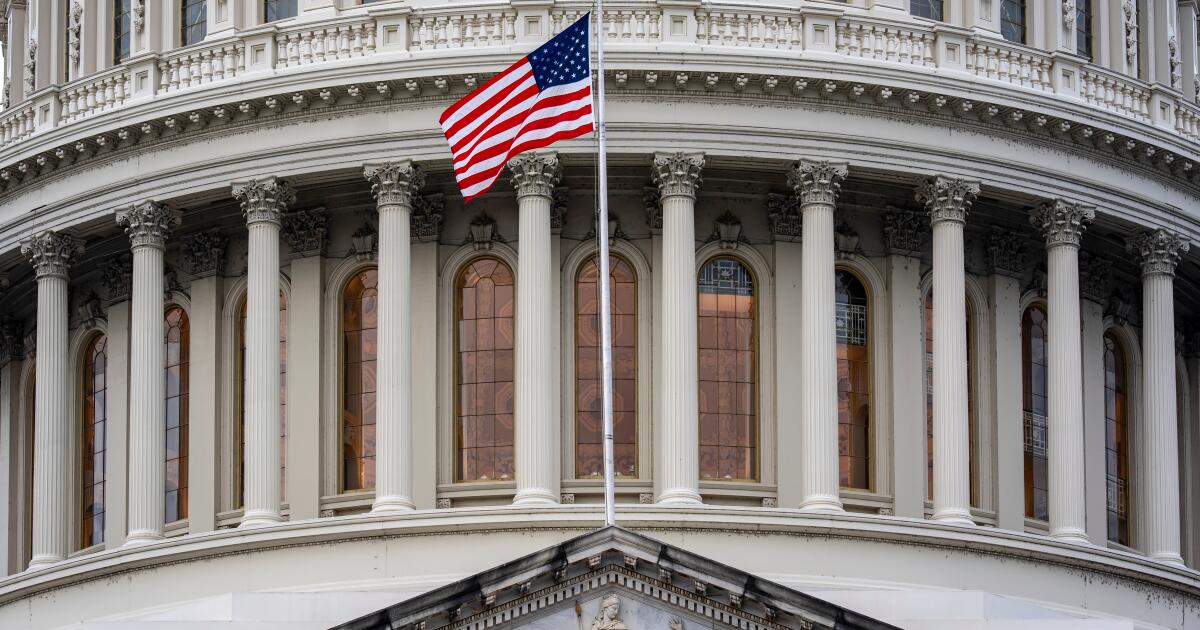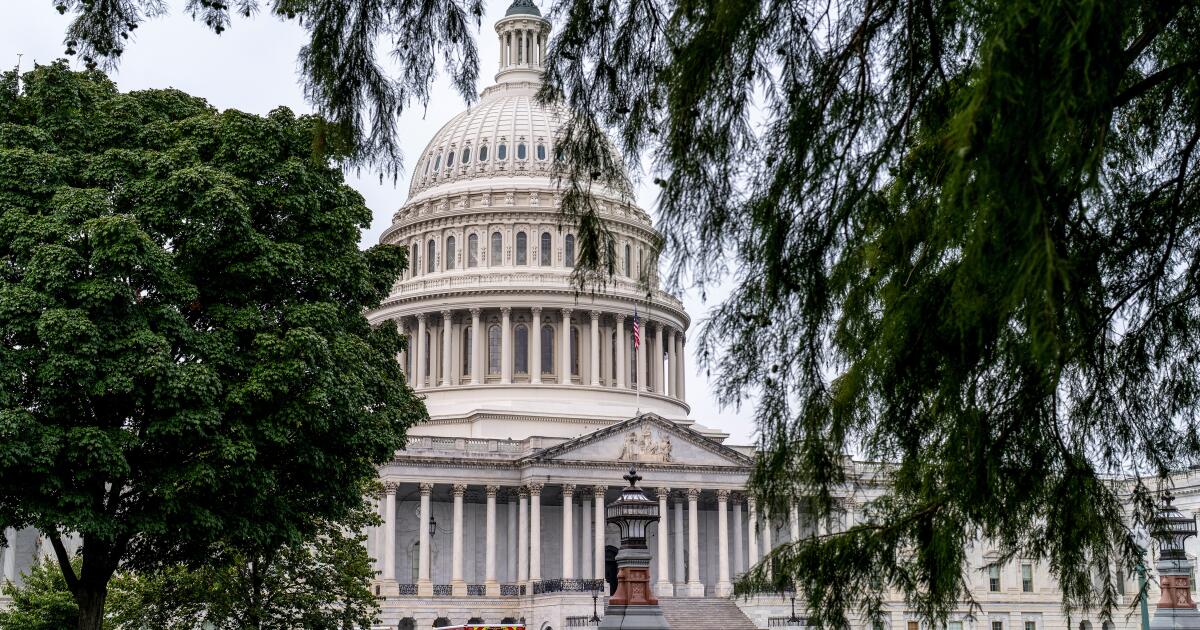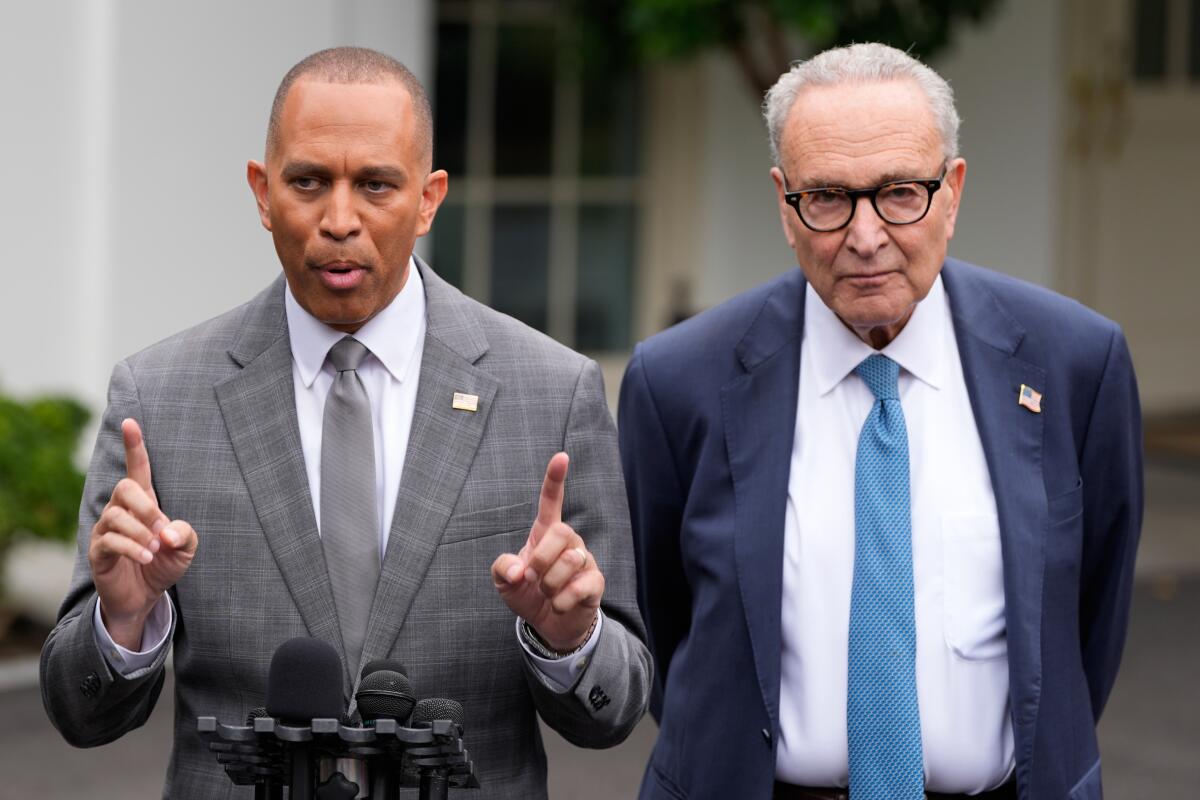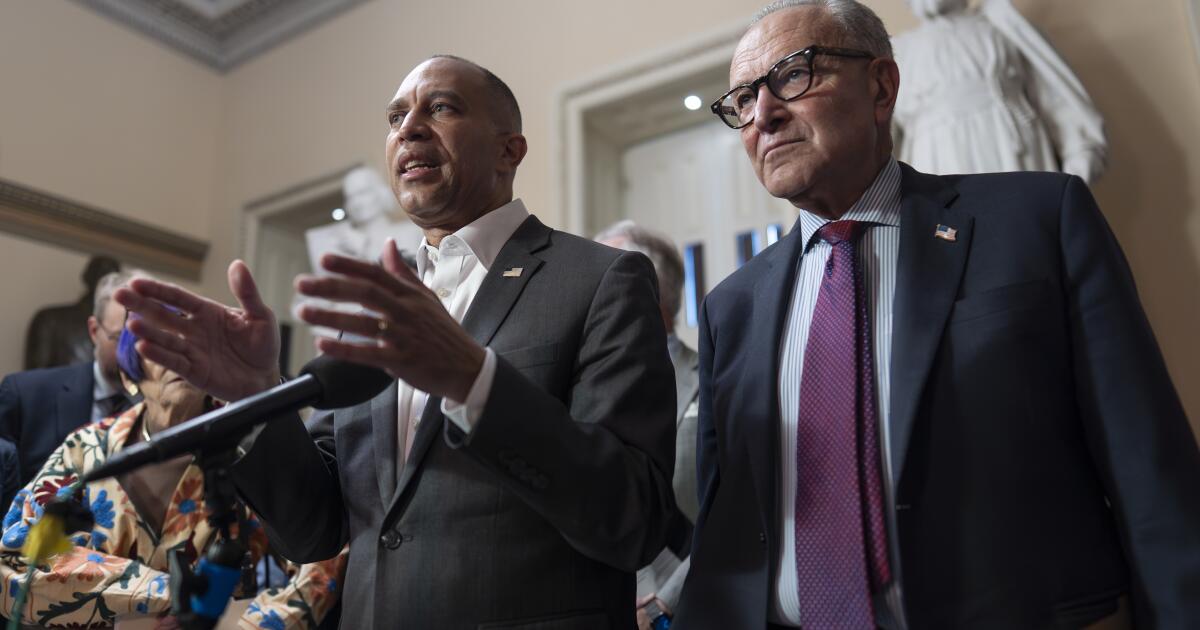Here’s what the government shutdown means for wildfires, weather and disaster response
The shutdown of the U.S. government has brought work determined by the Trump administration to be “nonessential” to a halt across the country as thousands of federal employees have been furloughed and ordered not to do their jobs.
The shutdown — the first in six years — began late Tuesday and could last days if not weeks. Many employees may not return to work at all, as the White House’s Office of Management and Budget recently advised federal agencies to prepare for mass layoffs in the event of a shutdown.
While much of the fallout remains to be seen, federal agencies that deal with wildfires, weather and disaster response — including the U.S. Forest Service, the National Weather Service, the Federal Emergency Management Agency and the Environmental Protection Agency — expect to see some impacts.
Here’s what we know:
The U.S. Forest Service will shut down activities on more than 193 million acres of land across 46 states, including at least 154 national forests, according to the agency’s most recent contingency plan, published in September. Hundreds of recreational sites and facilities will be closed, while work on operations such as timber sales and restoration projects will be considered on a case-by-case basis.
The Forest Service — the largest federal firefighting entity in the country — will continue its work geared toward responding to and preparing for wildfires, according to the plan. However, the agency will reduce some work related to fire prevention, including prescribed burns and the treatment of vegetation to reduce fire risk.
What’s more, the shutdown will delay state grants for forest management and wildland fire preparedness; delay reimbursement for ongoing forest management work on non-federal lands; and may affect states’ ability to train firefighters and acquire necessary equipment, among other impacts, the plan says.
The California Department of Forestry and Fire Protection works closely with the Forest Service to manage fire preparation and response. Cal Fire officials said it does not anticipate any impacts to its ability to respond to blazes, and that the agency is fully staffed.
However, effects may be seen when it comes to federal grant programs that support fire prevention work in the state. For example, private property owners in California who rely on federal funds to conduct vegetation reduction work or create defensible space on their land may have to “front the money themselves” while they await reimbursement said Jesse Torres, deputy chief of communications with Cal Fire.
“The other thing is there are a lot of unknowns,” Torres said. “We don’t know what this is going to look like — is it going to be two days, two weeks, two months?”
Other agencies that play key roles in California’s disaster response and preparation — including the National Weather Service and the Federal Emergency Management Agency — are largely deemed essential and will face fewer interruptions, according to their contingency plans.
“We are still operating in our core mission function and providing most of our normal services,” said Ryan Kittell, a meteorologist with the National Weather Service in Oxnard. That includes weather forecasts and extreme weather watches and warnings.
“The things that we do for public safety will continue as normal,” Kittell said.
About 84% of FEMA employees, meanwhile, are exempt from shutdown-related furloughs, according to its plan, which provides few additional details about which operations will cease or proceed.
Officials with Gov. Gavin Newsom’s office said FEMA staff have advised them that they will continue to make payments for existing disaster declarations made by President Trump, but there’s no guarantee that new or additional disaster declarations or funding will be made available.
FEMA’s Disaster Relief Fund — the main source of funding for response and recovery efforts following major disasters — is also running low and is not likely to be replenished during the shutdown. It requires congressional approval for additional funds.
What’s more, FEMA, the National Weather Service and the Forest Service have already been affected by significant budget cuts and layoffs this year as part of the Trump administration’s larger reorganization of the federal government, which it says will help save taxpayers money.
These agencies, including NWS’ parent agency, the National Oceanic and Atmospheric Administration, have lost thousands of employees to layoffs and buyouts and have experienced reduced operations, grant cancellations and the closure of offices and research arms.
The same is true for the EPA, which has undergone staff cuts and layoffs in addition to a considerable shift in its organizational priorities. The nation’s top environmental agency has spent the last several months loosening regulations that govern air and water quality, electric vehicle initiatives, pollution monitoring and greenhouse gas reporting, among other changes.
Experts said the shutdown could further weaken the EPA’s capabilities, as nearly all of its employees — about 90% — will be furloughed. While the EPA’s imminent disaster response work will continue, such as work on oil spills and chemical releases, longer-term efforts including research projects and facility inspections will halt, according to the agency.
Meanwhile, H.D. Palmer, a spokesman with the California Department of Finance, said impacts to the California EPA’s environmental programs should be minimal if the shutdown is brief, but that problems could arise if it drags on long enough to create backlogs and funding lapses.
The average length of government shutdowns over the last 50 years was seven days, Palmer said. However, he noted that the most recent federal shutdown from December 2018 to January 2019 — during Trump’s first term — lasted 35 days.
